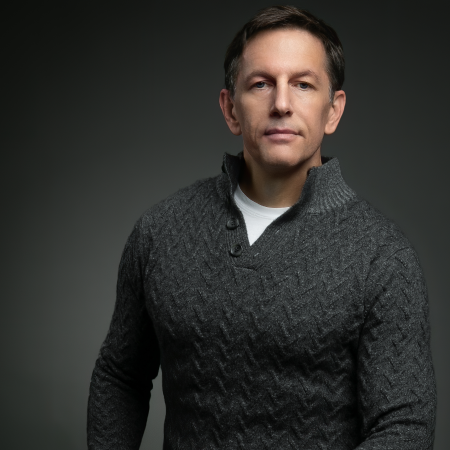By now the rise of telemedicine is no longer news.
Virtual visits were already growing in popularity before the pandemic, but skyrocketed when shutdowns and quarantines made them a necessity.
By all accounts, telehealth has become embedded in the US health care landscape as an adjunct to traditional visits and in some cases, such as behavioral health, a viable – and often preferred – alternative.
For instance, Kyle Zebley, VP of public policy at the American Telemedicine Association (ATA), told Medtech Insight in February that virtual mental health visits are often considered more effective than in-office ones and have become the popular choice for providers as well as patients. (Also see "The Pandemic Has Reshaped Telemedicine – And ‘There’s No Going Back’" - Medtech Insight, 9 Feb, 2022.)
And earlier this year, the American Medical Association (AMA) launched an initiative with a group of health care experts to increase access to behavioral health services through digital technology. (Also see "Telehealth Essential To Addressing Mental Health, Physician Group Says" - Medtech Insight, 23 Feb, 2022.)
Both Zebley and the AMA agreed the pandemic shined a light on the need for telemedicine – for all therapy areas – and reshaped the technology for good.
“Multiple studies prove telehealth is as good as and better in many ways over traditional models.” – Stuart Long
But whereas the logistics of virtual mental health counseling make it a practical option for patients and providers, what about telemedicine for treating complex physical conditions, such as cardiovascular disease?
Well, according to Stuart Long, CEO of medtech firm InfoBionic, remote cardiac monitoring has been around long before behavioral telehealth and is now entering its sixth decade – “60 years’ worth of evolution.”
Long discussed the benefits of telehealth in treating and managing cardiovascular disease – and health care overall – in a recent interview with Medtech Insight.
Medtech Insight: We know telehealth increased during the pandemic. But can you talk about the technology prior to the pandemic?
Stuart Long: Telehealth was largely a nascent market prior to the pandemic. Although telehealth and remote patient monitoring had been in the evolutionary stages since the early 2000s.
Remote cardiac monitoring, which started back in the 1960s, had evolved a great deal over the years and leading up to the pandemic had reached new heights with cloud-based solutions and more broad adoption of artificial intelligence.
Overall, the relatively slow growing telehealth market was due to a variety of factors – yet centered around two key elements: technology and healthcare insurance reimbursement.
Technology was limited by widespread inaccessibility, IT infrastructure, and communication speeds capable of allowing the need for telehealth or remote monitoring to be deployed both easily and efficiently.
Reimbursement took quite some time before nominal chronic care reimbursement codes made their way to the market.
Beyond this, clinician and patient comfort, along with patient data security, were limitations that had steep barriers to overcome.
Has the pandemic then added to the momentum telehealth had before it hit and influenced these factors?
Without question, yes. The pandemic came at a time that the technology and the reimbursement infrastructures had caught up. It appears both were waiting on a catalyst. The pandemic was just that.
Further, with the immediate need to shelter at home, the interest in remote or virtual physician and clinical care exploded. Reimbursement models were launched, and ultimately the genie got out of the bottle.
So then do you see telehealth as here to stay even after the pandemic? Or the genie not going back into the bottle?
Definitely here to stay. Multiple studies prove telehealth is as good as – and better in many ways – over traditional models.
In discussions about the benefits of telehealth, rural communities, states like West Virginia, for instance, are often mentioned. Do you think telehealth is particularly valuable for patients living in rural areas where there may be fewer clinics and providers? Or among other groups, such as those with difficulty traveling?
Yes. In traditional methods many rural patients would have to travel long distances and incur hotel and associated expenses just to spend 15 minutes with a doctor. Now, in a plethora of ways, care can be provided via free telecommunications systems like Zoom and others.
And, if needed, telehealth and remote patient monitoring kits can be sent to the patient and then put on by the patient that will automatically start sending clinical data to their care providers all while the patients have never left their homes.
 STUART LONG
STUART LONG
It seems telehealth is more conducive to certain therapy areas, such as behavioral health, or at least more practical. But is that the case with cardiac care?
Remote cardiac monitoring has entered its sixth decade…60 years' worth of evolution. It started long before behavioral telehealth, yet behavioral telehealth is easily adopted due to the fact it doesn’t mandate any medical device requirements.
Further, given their intense private nature, patients are much more comfortable doing it from the convenience and comfort of their private homes.
However, on the whole, cardiology remote monitoring is on par with other telehealth visits and has a very large market adoption, with over 5 million tests performed remotely every year.
So what does cardiac telecare look like? Is it a cardiologist watching a patient use an at-home blood pressure monitor? Or sending at-home test results, like an EKG, to the cardiologist? Or simply discussing symptoms? Or going over lifestyle changes?
A patient can experience symptoms like palpitations, fluttering or dizziness. They would call or have a tele-consult with their primary doctor, who would then refer them to a cardiologist. Once the cardiologist has assessed the patient in the initial virtual visit, they would order a monitoring device to be shipped directly to the patient. The patient follows the instructions and can even call the cardiology office for assistance in putting on the device … or even a video call.
They would wear the device for the prescribed time and their cardiac data is sent to the cardiology office, where, in the case of InfoBionic, the data is being analyzed by both artificial intelligence and humans 24/7.
If the exam finds something – and depending upon the severity level – the doctor will schedule a post-virtual visit and walk through the results. It can range from no action to prescribing medication to planning for an interventional procedure all the way up to sending the patient directly to the hospital as soon as possible – and 100% of this process can be done virtually.
Are there limitations to cardiac telehealth? And, if so, how can they be addressed?
Current limitations still remain broad in terms of patient adoption of technology, communication infrastructure as well as heterogeneity of clinical devices. For the most part, the surging telehealth visits are with patients 65 and older. This current market group can be more challenging for adoption of technology simply because technology and/or devices are too complex or difficult to use. Certain cellular and broadband coverage is better, yet it is still not ubiquitous.
Finally, in terms of companies and technologies, it’s still a bit like the wild west and we’re in the infancy of the market maturation curve. In total, it’s a ‘system of system’ and getting them all to talk to each other comprehensively is still a way out.
Lastly, without adequate broadband and internet service telehealth can’t work. Is there anything on this front you’d like to address?
This is indeed an ongoing challenge, a barrier for widespread adoption, yet it’s vastly improved even just in the past 36 months with the roll out of 5G networks by the cellular carriers.
The sunset of 3G by the major carriers has accelerated the adoption of 5G and in many cases the 4G and 5G cellular outperforms broadband in both speed and availability, yet we still have work to do to ensure coverage for everyone.

